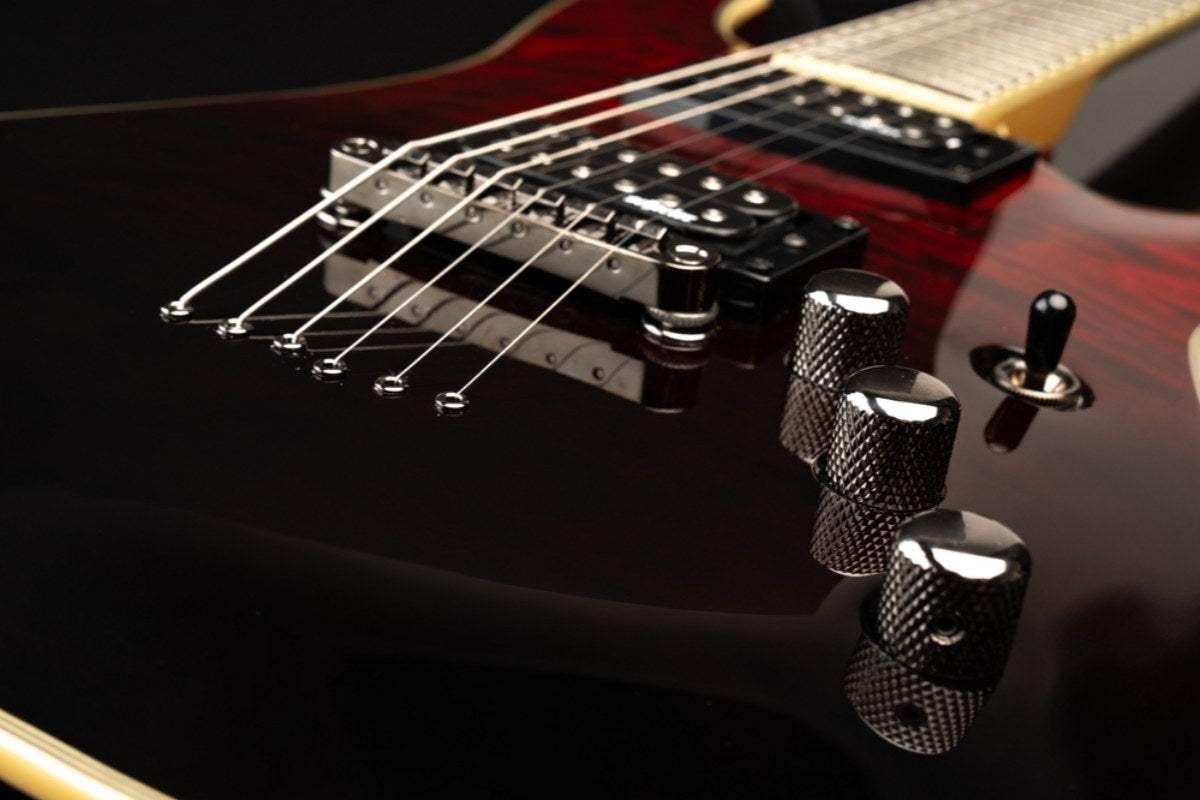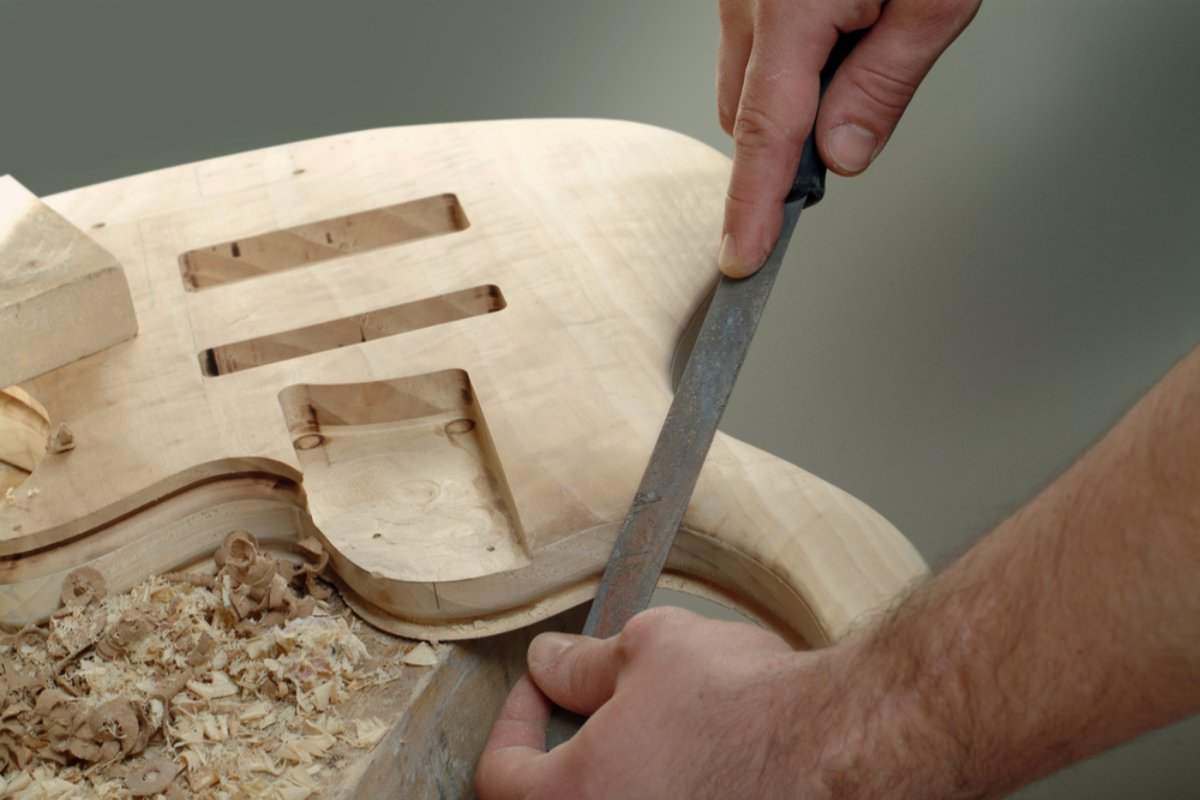Before you even think about trading your entire pedal collection for a Neural Quad Cortex or getting that amazing tube amp, you must know that your guitar’s cool factor starts with your pickups.
In this second part of our journey, we’ll tackle the two most common types of electric guitar pickups; single-coils and humbuckers. If you haven't read the basic pickup knowledge, you can read it first.
But that’s not all, of course, you know we go deep into these subjects so you can understand what’s best for you. We’ll talk about 60-cycle hum, gain, tone, and what all of this means from a player’s and a technician’s point of view.
Are you ready for the second leg of this tour through the electric guitar pickup kingdom?
Let’s do it!
Single-Coil Pickups
Leaving the initial Rickenbaker “Frying Pan” electric pickup efforts, the first single-coil pickups aren’t Fender’s creation. Well, jazz legend Charlie Christian was playing electric in the 1930s; long before the first Telecaster made it out of the factory.
Also, Gibson’s P-90 pickups were officially introduced in 1946, right after WWII finished and the company resumed making musical instruments.
But we’ll deal with those pickups in the next step of this journey, for now, when we talk about single-coil pickups, we’ll talk about Fender-style pickups.
For an in-depth explanation of how these pickups generate the magnetic field, please refer to the first part of this four-piece journey.

60-Cycle Hum
One of the first things we need to talk about when we talk about single-coil pickups is the 60-cycle hum. This could be defined as a low humming coming from the amp. What is it? Well, it’s your guitar’s pickup receiving radio frequency interference and electromagnetic frequency interference (RFI and EMI respectively).
This comes from the power socket but also from the neon signs inside the bar, the appliances next to you, and any other thing emitting frequencies your pickup might pick up. Don’t forget you have electromagnetic fields on your ax.
Well, although some people hate them because they’re not pristine, I think that’s part of the mojo. It’s like listening to Hendrix, SRV, or John Frusciante. There has to be dirt in their guitar for that percussive noise to come out like that.
You might think of it as the noise that comes along with the warmth of vinyl records. It’s all part of the magic.
If you still want to get rid of that noise, then read on, because the solution is right below.
Stacked-Coil Designs
We’ll talk about them further down this post, but what you should know right now is that coils with reverse polarity cancel each other’s hum. So, what would happen if you included a second magnet coil underneath the main one and you isolated it so it wouldn’t participate in the resulting sound?
Well, the result is all the cool tones and characteristics of the single-coil pickups we all love without the 60-cycle hum.
You can find stacked-coil designs, for example, in all the American Deluxe (now American Ultra) Series by Fender. Also, some legendary signature Stratocasters like Eric Clapton’s feature the same pickups.
You can even find noiseless single-coil pickups made of Samarium Cobalt, a rare magnet we talked about in the previous step of this journey. But that’s not all, there are plenty of Alnico and ceramic noiseless pickups available in the market today.
The RWRP-Middle-Pickup Trick
Another option to reduce the 60-cycle hum in a guitar like a Stratocaster is wiring the middle pickup to have a reverse polarity. That way, when you mix it with the neck or the bridge, you can get a noiseless sound; the hum will cancel itself out of the equation in positions 2 and 4.
Most modern 3-single-coil guitars come wired like this as a factory standard.
Single-coil Pickup Tone & Gain
Now that you’ve seen the characteristics of a single-coil pickup (for a more in-depth explanation of magnetic fields and coils, check out the first part), let’s talk about how they sound and feel.
Some characteristics:
• Definition – Because of their design, single-coil pickups offer superior string definition. This is because each of the pole pieces of the pickup is a magnet. Therefore, you can adjust each magnet’s height (and thus how much of each string it receives). Playing a distorted chord through a single-coil pickup might mean hearing every note in it.
• Edgy, Treble-Oriented – Although this is very subjective and depends on the position it is placed in, single-coil pickups tend to be brighter. Furthermore, there’s an edge found in the upper mids that’s very difficult to obtain with any other pickup type. You can think of right-hand percussiveness à la Hendrix or SRV.
• Noisy – The 60-cycle hum is a thing with these pickups. You shouldn’t overlook it. For example, styles like neo-soul or funk might demand noiseless pickups.
• Prone to Feedback – While it’s true that there’s no right or wrong with music, single-coil pickups handle low-gain scenarios much better than high-gain ones. One of the first things you notice when you add a lot of gain is a wildly deafening high-pitched feedback you’ll learn to hate. The EQ curve is also not too friendly for high-gain settings.
• A Clean Canvas – When connecting a guitar with single-coil pickups to an amplifier or a pedal, you’re starting with a clean canvas because the gain level of these pickups is usually not enough to drive an amplifier into overdrive.
Get Single Coils if You
Single-coil pickups are for players who love playing clean. There’s a glass-like quality to a single-coil pickup played through a compressor. You can think of a tone like Andy Summers in The Police, John Mayer, or Nile Rodgers.
Also, they make great overdriven or fuzzed-out pickups. They have the edge that makes overdrive seem more sparkly and brighter. You can think of Clapton, Stevie, and John Mayer. Those super clear fast transitions like the intro to “Scuttle Buttin’” are a great example.
For fuzzed-out tones, hearing Hendrix and the Fuzz Face, Gilmour and the Russian Big Muff, and Jack White and the American Big Muff can give you an idea of the broad spectrum of tones you can get with single-coil pickups.
So, if you’re after the wild, far-out sounds of Jimi, the smooth, sweet, melodic, infinite-sustain tone of Gilmour, or the wall of sound from Jack, single-coil pickups have enough definition to tame the beast and give you the best of fuzz.
Humbucker Pickups
We started this part of the journey talking about hum, remember? Well, now read the name of these pickups again. Yes, these are humbucker pickups, pickups designed to eliminate hum.
They made a stellar appearance at a time when the birth of rock and roll needed them the most. Yes, the lack of hum and the powerful low end allowed guitarists to push the volume of the amps and make room in the center of the stage for the guitar.
The year was 1957 and Seth Lover was working for Gibson, directed by the great Ted McCarty (yes, the guy in the PRS guitars). He came up with a pickup design that could eliminate hum and give the guitar more volume.
We now know that pickup as the famous PAF humbucker and it’s the holy grail by which all other pickups are judged. PAF stands for Patent Applied For because when they made it to the market, the patent wasn’t granted yet. If you're not clear about what are the types of electric guitar pickups, we hava an article on this.

Two or Four Cable Humbuckers?
Most guitar pickups have two cables that come out of them on the side. Connecting one to the pickup switch or the volume knob and grounding the other is enough to get it to work. Well, some humbuckers come with four cables instead of two.
These humbuckers can be wired to a coil-splitting pot. This way, you can pivot from single coil sounds and humbucker tones. Yes, you must wire both leads of the slug coil (the one with no screws) to the ground. This way, when you engage the coil tapping pot, you can cancel the coil out completely.
So, if you’re going to wire your guitar like that, then four-cable humbuckers are a must. On the other hand, if you’re just going to use them as a regular humbucker, then a 2-cable humbucker will get the job done.
Humbucker Tone & Gain
The first thing to say about humbucker pickups is that they’re made of two coils wired up in series. Therefore, the resulting audio is not only louder but also has different tonal characteristics. For example, the low-end response is completely different, getting tighter, rounder, and punchier.
This also means that the high-end squeal when the guitar feeds back isn’t as treble-oriented as with single-coil pickups.
Let’s talk about the characteristics of humbucker pickups:
• Power – The first characteristic players favor humbuckers for is power. The dual coils of the humbucker give your guitar an extra dose of drive that can bring any amplifier into overdrive more easily. Also, that power or punch is something that comes from the tight low end and the pronounced low-mid eq curve.
• Noiseless Sounds – Although humbuckers have more power and can drive amps easier, they are noiseless in the sense that they don’t have any hum. So, you can push the volume and gain up and not worry about unwanted noises.
• Thickness – The best word to describe the tone of a humbucker-equipped Les Paul guitar, for example, is “thick”. This thickness is a welcome side effect to the power located in the low mids. A great way to picture this is thinking of Kurt Cobain’s tone in Nirvana when installing a humbucker on a Jaguar body. That signature “wall of sound” Nirvana oozed in its records came from the humbucker and a high-gain setting.
• Not as Versatile – While single-coil pickups can be considered a blank canvas to work your tone from, humbuckers tend to be more difficult to tame. Indeed, if you’re looking for a pickup that can handle all sonic scenarios, a single coil (especially those with stacked coils) might be more suitable. Humbuckers tend to push you into rock territory all the time.
Get Humbuckers if You
Who should get humbuckers for their guitar? Well, humbuckers are perfect pickups for those about to rock.
Players who favor high-gain scenarios like heavy metal, trash, and everything beyond rock and roll will find home in humbuckers. Furthermore, players like Dave Murray play their Stratocaster with three humbuckers; this means the thick, heavy tone of Iron Maiden comes from mighty humbuckers.
We could say the same about Slash, Angus, Kirk Hammett, and the list goes on.
I also have to say that players who play other musical styles needing that punch and gain, like punk, will benefit from humbucker’s weight and tone.
Finally, it’s possible to get the compression of the humbucker pickup in a clean setting if you can play with your volume knob. Backing it down will cause the gain to drop and the sound to clean up. This translates into big, mammoth-like, compressed cleans with more body than edge.
Here’s the master himself, Mr. Joe Bonamassa showing you how to get many sounds from a Les Paul.
Electric Guitar Pickup Shape and Fit
To say that electric guitar pickups come in different shapes and sizes isn’t blowing any scoop. On the contrary, it’s something you can see just standing against the counter at a music shop.
That shape needs to match the slot available in your guitar. In other words, you can’t just install any kind of pickup in any type of hole because they just won’t fit. You might be thinking about Eddie Van Halen’s Frankenstein guitar, but that just looked good on Eddie. Carving a big hole in the wood isn’t something most of us want to do to our axes.
So, this should be the first thing to think about when choosing a replacement pickup. Will it fit your instrument?
As a rule of thumb, single-coil pickups occupy half the space humbuckers do. That said, there are also some differences among single-coil pickups.
For example, you can’t install bridge Telecaster pickups into the slot for a regular single-coil pickup because it has a metal base. Likewise, pickguard-mounted lipstick neck Telecaster pickups won’t fit the bridge spot of the same guitar.
So, unless you’re building a guitar from scratch, bear in mind that size must match gain and tone.
Single-Coil-Sized Humbuckers
The good news is that the replacement pickup market has grown so big that you can find humbuckers to place in single-coil slots.
You can also find P-90s to replace humbuckers, but we’ll leave that for the next article.
These humbuckers fit two coils in the space for a single-coil pickup and you end up having the tone, gain, and response of a humbucker for your Strat without carving any holes.
By this I don’t mean that you will find every humbucker model in a small size, on the contrary, the offer is quite reduced still. Nevertheless, it could be a great way to breathe new life over that Strat you had forgotten. Furthermore, having an HSH configuration can give you a virtually endless tonal palette to play with.
Conclusion
The second leg of our journey is a wrap! By now, the difference in tone, shape, and application between humbuckers and single-coil pickups should be more than clear. That said, there’s no right or wrong in music, so use this as a compass but be bold and free to discover new sonic territories.
Speaking of which, the cool factor on your tone starts with your pickups. By choosing the right combination you can bring a guitar to life, and you can also extend the range of your tone palette. For example, having an HSH Stratocaster in a studio setting might be the perfect way to get all the tones you need from a single instrument.
Let’s meet again in the third part of this journey where we’ll discuss the oddballs and the effects of wiring over tone.
Happy (bold and free) playing!
If you like this article, please share it!
Be sure to join our FB Group Guyker Guitar Parts & Accessories Community to share your ideas! You can also have connections with like-minded guitar players, Guyker updates as well as discounts information from our FB Group.






